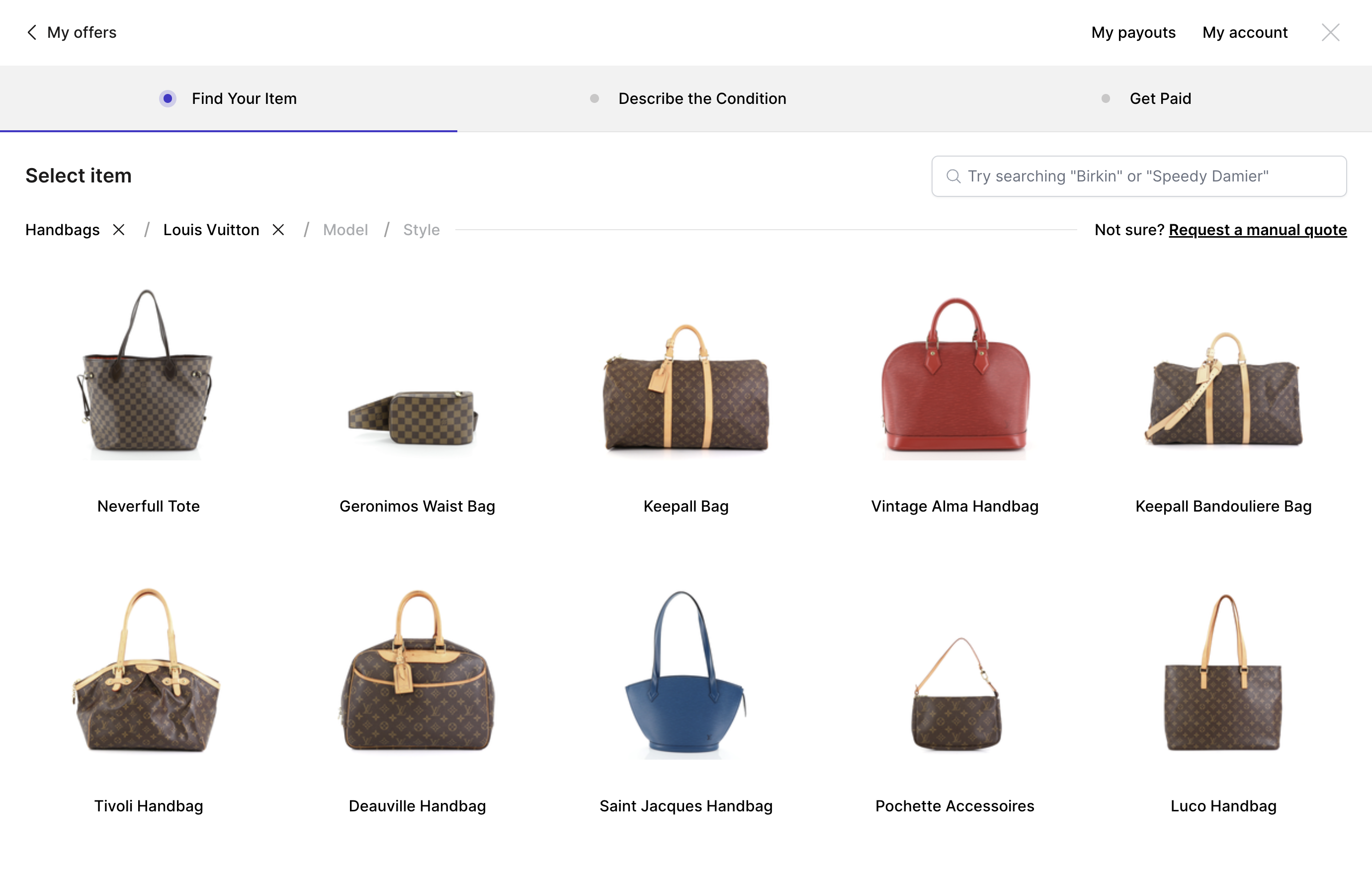
At Trendful, we didn’t just build a Catalog API—we use it ourselves every day. In this first article of our series on Catalog API use cases, we’re pulling back the curtain on how our own out-of-the-box Resale App is powered by the API.
Building a Step-by-Step Submission Flow
For resale apps, guiding users through a clean, intuitive product submission flow is essential. Using the Catalog API, we created a step-by-step experience for sellers, starting with broad categories like handbags or watches, then narrowing down through more specific attributes. For handbags, the flow looks like this:
- Category → Brand → Model → Style
- If the selected style comes in multiple sizes, we prompt the user to choose a Size


This structure is possible because our Catalog API was built with hierarchical relationships and category-specific attributes in mind. That means each handbag reference knows what style it is, what model it belongs to, and whether it has variants like size.
For watches, we use a different structure with attributes like case size, dial, and bracelet, which are more relevant to that category. The API makes it easy to tailor the experience based on product type.
Rich Data to Build Seamless UI
The API doesn’t just return IDs—it provides titles, images, popularity scores, and other metadata. This allows developers to create beautiful, responsive interfaces with meaningful default values and dropdown suggestions, helping users find their product faster. We’ve also built semantic search directly into the app using the API. Customers can search using natural language—typing in something like “Chanel Jumbo flap bag”—and our search engine will return the correct reference, even if there are typos or synonym variations.

Instant Pricing with Fair Market Value
Once the item is identified, merchants can opt to provide instant offers powered by our API. This pricing isn’t static—it adjusts based on:
- Condition (e.g., good, great, excellent)
- Thousands of recent price points collected weekly across more than 300 resale vendors, including P2P platforms, managed marketplaces, and brand retailers.
We collect 200,000 new price points per week, resulting in over 30 million price points for about 70,000 references. That depth allows us to offer granular, fair market values that reflect the actual resale market, updated in real time.

Bonus: Trendful Vision (Image Recognition)
We also support image-based identification through Trendful Vision, our image recognition engine. It lets users upload a photo of a watch or handbag and find the most likely match in the catalog. That’s powered by the same API and tied back to the same reference hierarchy.
Who This Use Case Is For
This use case is ideal for:
- Resale merchants who want to build their own branded submission experience, with complete control over the flow, UI, and customer journey—instead of using a rigid out-of-the-box form.
- Retailers expanding into resale who need to create a streamlined trade-in or buyback process that aligns with their product categories, brand voice, and pricing logic.
If you’re building a resale experience where users submit inventory—whether in-store, online, or via mobile app—this setup gives you the flexibility to: Structure the experience by product type (e.g. handbags vs watches)
- Use dropdowns or search boxes with auto-suggestions and images
- Plug in instant price offers using live market data
- Integrate image recognition for even easier submissions
Because the Catalog API is modular and well-structured, you can create an entirely custom resale experience—without starting from scratch.
Coming Next: Use Case #2 — Powering E-Commerce Listings
In the next article in this series, we’ll explore how resale merchants and peer-to-peer platforms use the API to power e-commerce listings. From title and pricing recommendations to improved product categorization and search, we’ll show how the Catalog API helps sellers create cleaner, more consistent listings—and ultimately drive more conversions.